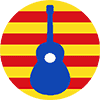Yambú
The Yambú also called Rumba de Cajon is one of the oldest forms of the Rumba complex.
Birth of the Yambú
This variant of Rumba dates back to the second half of the 19th century, from the first days of the arrival of freed African slaves in the cities. The birthplace of this urban musical expression is debated; generally attributed to Matanzas, some link it to Havana. The first Yambú would be “El Yambú” which contains the famous refrain “Avé María morena” which exalts the beauty of a black woman.
The word “yambú” would come from “yambula” which means “land of whirlpools” in memory of the African lands of the Briyumba hills.
After the revolution of 1959, the Yambu, in danger of disappearing, had to be saved, especially thanks to the work of the Conjunto Folklórico Nacional de Cuba.
The instruments
Yambú formations were originally built around 3 cajones also called cajas (wooden boxes that replaced the drums prohibited by the authorities).
These cajones are called :
- salidor, tumba, tumbadora, bass or hembra, the lowest drum that maintains the rhythm;
- segundo, tres-dos, tres golpes, repicador, llamador, macho or seis por ocho, medium drum that completes the rhythmic base;
- quinto, the most acute drum that improvises.
In the first Yambús, the repicador was not present. It was added later. Today, it is common to complete this instrumentation with tumbadoras or congas, especially for the part of the repicador.
This set is completed by :
- claves ;
- a guagua (piece of bamboo) struck with palitos (sticks) which can also be a cajita (small wooden box) struck with spoons. The rhythm played by this instrument, often called catá, complements that of the clave;
- marugas (metal shakers);
- the chekerés.
The structure of the Yambú
The structure of the Yambú has not changed since its origin. It is first the clave in 3/2 that begins to establish the basic rhythm. Then, the other instruments enter gradually.
The song can then begin with a long introduction called lamento (lament), llorao, lalaleo or tarareo similar to the diana of Guaguancó. During this part, the solo singer or gallo (which means “rooster”), sometimes alternating with the choir, pronounces meaningless sounds: “belé belé belé”, “a la la la”, “a na na na”, “que bueno, que bueno aé”… Some people see an influence of the Cante Jondo, an Andalusian flamenco song.
Then comes the canto which is composed :
a long first part called the tema, made up of short melodies in major mode and improvised by the soloist sometimes accompanied by some singers of the chorus, which allows to expose the theme of the piece. The singer is said to be decimar although he does not necessarily use the decima;
a second section called the estribillo (refrain) in which the whole choir or vasallo joins the soloist singer.
There is then a dialogue, called the montuno, between the soloist (drummer or singer) who leads the inspiración (improvisation) and the choir that repeats in unison the capetillo (short phrase of support/relief for the improviser). The intensity and sometimes the tempo of this responsorial part continues to rise to a crescendo, ending with the cierre (concluding phrase).
The lyrics, in Spanish, often refer to everyday life. For example, in “Mama’buela”, the story is told of a young boy who does not go to school. His grandmother, when she meets him in the street, tries to make him see reason.
The rhythm
Yambú is characterized by a low tempo; it is the slowest of the Rumba forms. This is why it is called the Rumba of the elderly.
Special thanks to Julien and his ultimate resource on cuban music and dance – this page is merely a translation.

